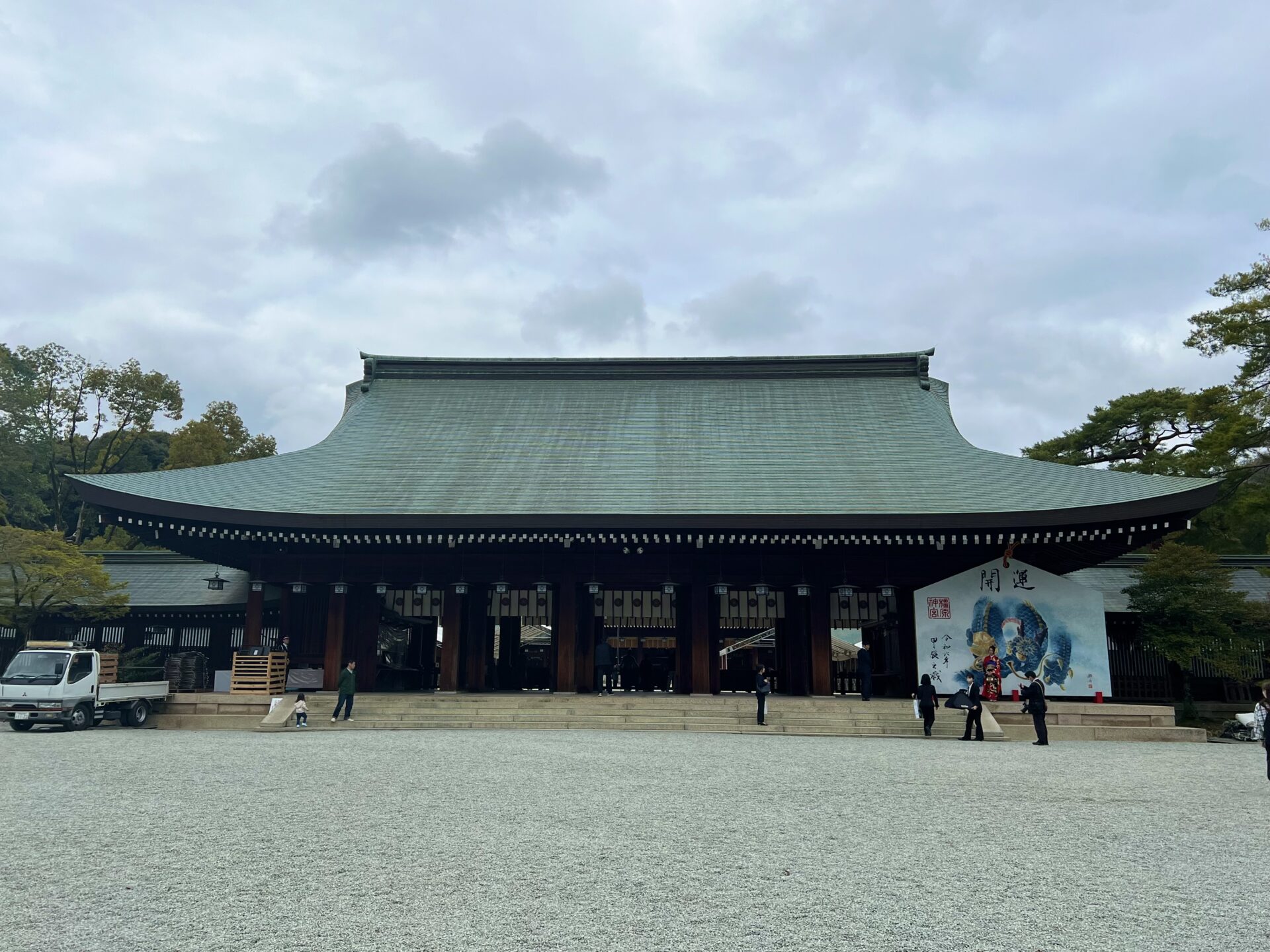Kashihara Shrine is a massive shrine located at the foot of Mt. Unebi, one of the Three Mountains of Yamato, covering a vast area of 150,000 tsubo (approximately 50 hectares). It enshrines Emperor Jimmu, the first emperor of Japan, but it is relatively new, having been established in 1890 (Meiji 23). I once visited this shrine when I was in the area to see the adjacent Kashihara Archaeological Institute. The space is vast and refreshing. Japanese people are often captivated by large torii gates… I can’t help but feel “wow~ ❤” whenever I see a magnificent torii. It’s probably inevitable, being part of the Yamato people.
However, I have more interest in older things, so at that time, I wasn’t particularly fascinated by Kashihara Shrine. This time, when a friend said, “I definitely want to visit Kashihara Shrine,” I revisited it and became interested in its origins, which led me to write this article.
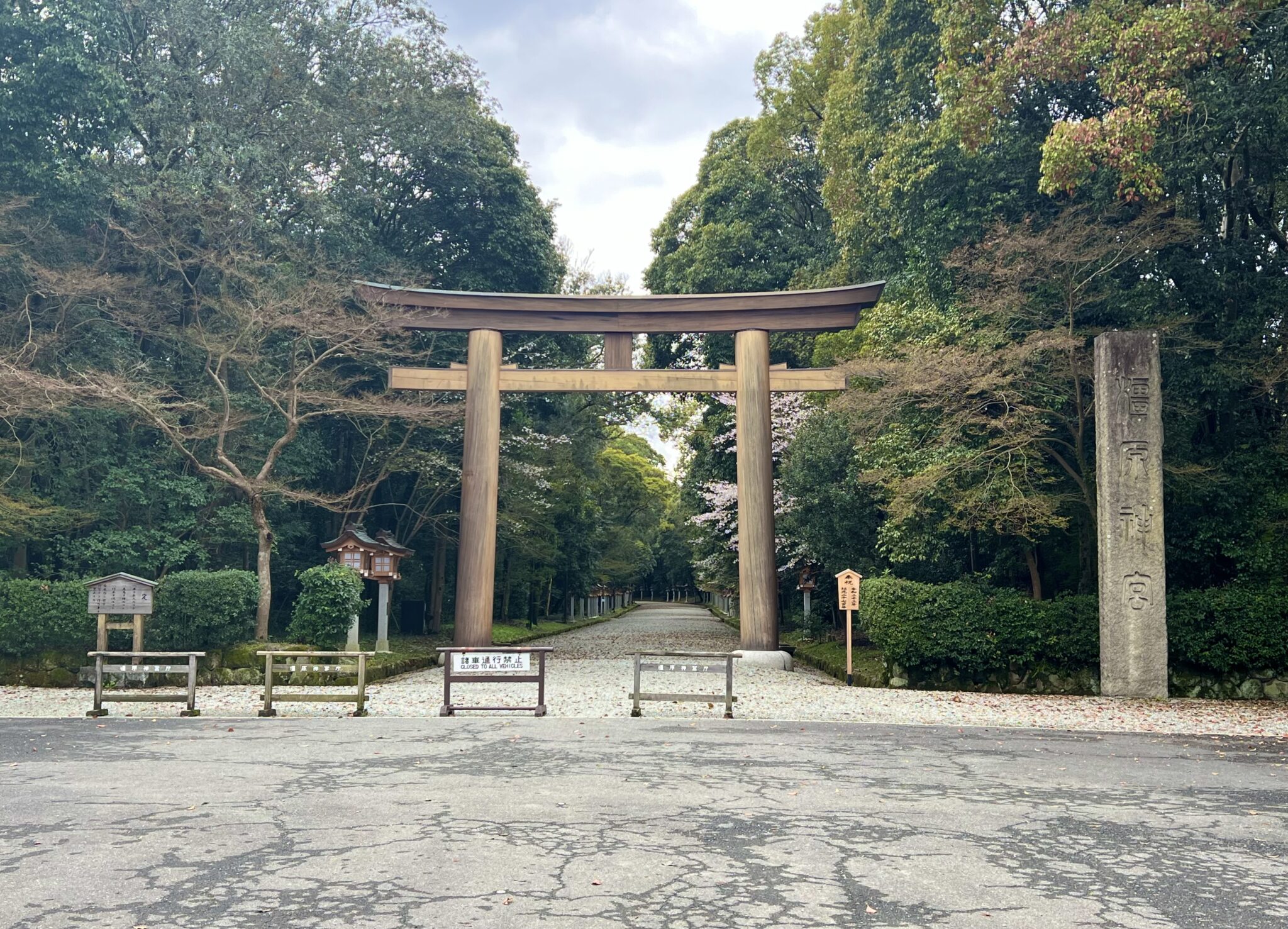
The shrine grounds are extremely spacious.

As you may know, the historical records of emperors tracing back from the 10th Emperor Sujin (3rd to 4th century?), who may have actually existed in real history, are part of mythology and are quite chaotic. Emperor Jimmu is said to have ascended the throne on New Year’s Day in 660 BC, which is exactly 1260 years before the enthronement of Empress Suiko in 601 AD. According to “An Examination of Ancient Chronicles” by the Meiji-era historian Naka Michiyo, there was a concept in ancient China called the “Xinyou Revolution,” which suggested a major revolution would occur every 1260 years (21 cycles of 60 years, with each cycle known as “Xinyou”). It seems that this idea also made its way to Japan. I can’t help but wonder if this was calculated retroactively… Such irreverent thoughts crossed my mind. It’s quite interesting to think that the concept of “Tennō” (Emperor) began around the 7th century, replacing the earlier title of “Ō” or “Ōkimi”(King). It is also said that after the Heian period, it became common to change the era name in the Xinyou year.
Furthermore, the reason that today’s National Foundation Day is on February 11th is because the lunar New Year was adjusted to match the current Gregorian calendar.
First Emperor Jimmu
Emperor Jimmu, a descendant of the Sun Goddess Amaterasu, was known by the divine name Kamu-Yamato-Iware-Hiko-Hohodemi no Sumeramikoto. He aimed to create a prosperous and peaceful nation, traveling eastward from the Takachiho Palace in Kyushu. After six years of tough travel, he finally established Kashihara Palace at the southeastern foot of Mt. Unebi and ascended the throne as the first emperor (according to the Kashihara Shrine’s official website). By the way, the emperors from this period were said to have remarkably long lifespans. According to the ancient chronicles “Kojiki” and “Nihon Shoki,” Emperor Jimmu lived to be 127 years old, the 10th Emperor Sujin lived to be 168, and the 11th Emperor Suinin lived to be 140.
Shrine Ground
When I first visited Kashihara Shrine, I entered through the North Shrine Gate, passing by the foot of Mt. Unebi. The approach on this side has a somewhat tranquil atmosphere, with a trailhead leading up Mt. Unebi along the way. I’d like to climb Mt. Unebi someday. This time, I entered through the South Shrine Gate via the grand main approach, which gave me quite a different impression (though the North Shrine Gate is still much more impressive compared to that of a typical shrine).
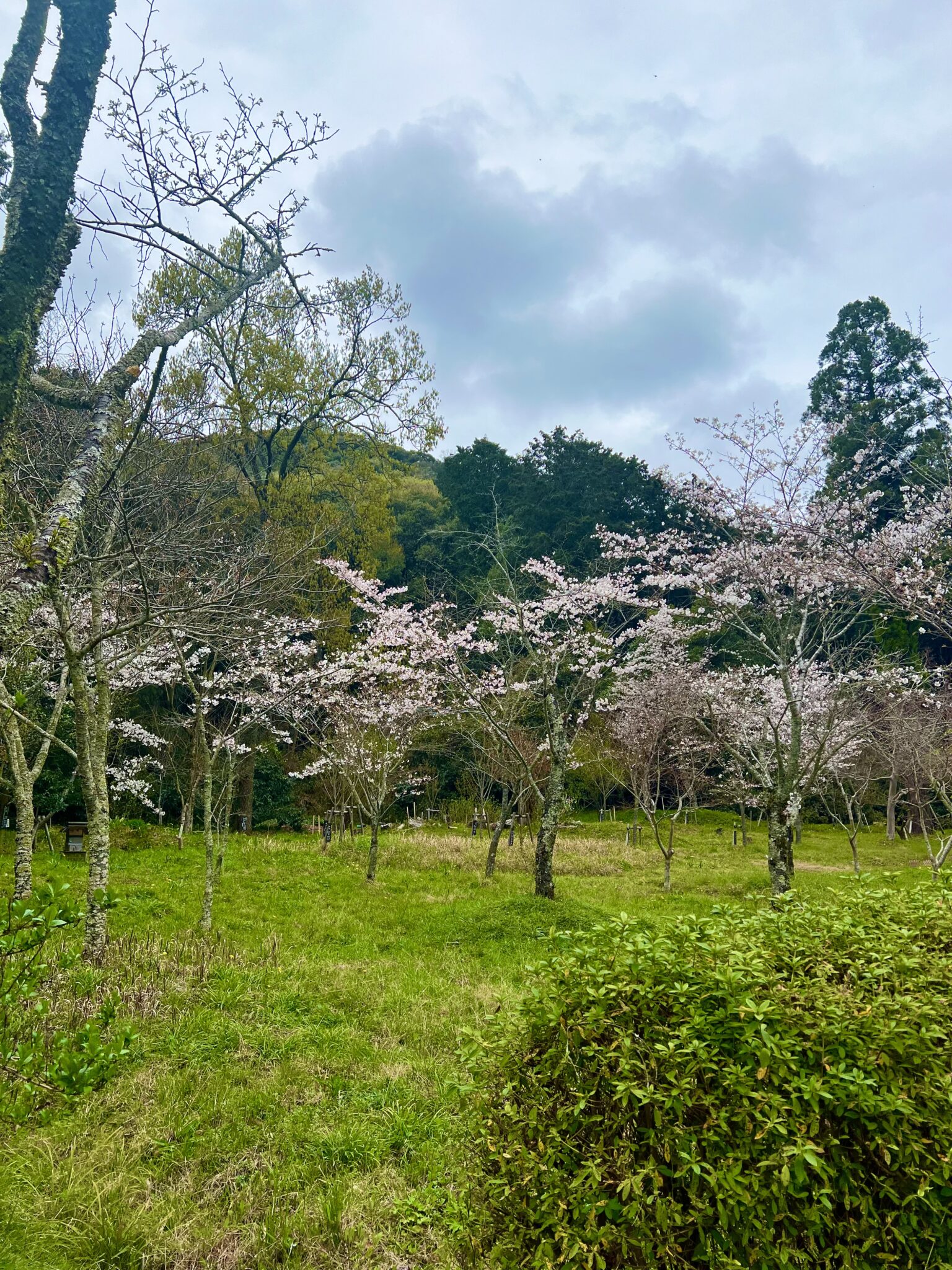
Before the construction of Kashihara Shrine, the southeastern foot of Mt. Unebi was a vast area of farmland. According to the official website of Kashihara Shrine, due to rising public enthusiasm for honoring Emperor Jimmu, approval was granted by Emperor Meiji. The Kashiko-dokoro, which enshrined the Sun Goddess Amaterasu within the Kyoto Imperial Palace, was transferred to serve as the main shrine building, while the Shinka-den, where the Niiname-sai (harvest festival) had been performed, was granted to serve as the worship hall of Kashihara Shrine. The construction of Kashihara Shrine involved not only donations from the public but also significant investment from the national budget.
Almost adjacent to Kashihara Shrine is Emperor Jimmu’s Mausoleum. This site was officially designated as Emperor Jimmu’s Mausoleum in 1863, prior to the completion of Kashihara Shrine. Before this designation, there were several candidate locations for Emperor Jimmu’s burial site, and its actual location was unclear. The establishment of Emperor Jimmu’s Mausoleum seems to have been greatly influenced by the rise of the sonnō jōi (“Revere the Emperor, Expel the Barbarians”) movement and the increasing reverence for the Emperor towards the end of the Edo period. It is said that there was strong support for this designation from Tokugawa Nariaki, the lord of the Mito Domain known for his loyalty to the Emperor, as well as from Emperor Kōmei. With the completion of Emperor Jimmu’s Mausoleum, it appears that Kashihara Shrine, which enshrines Emperor Jimmu, was subsequently built in chronological sequence.
Along the approach to Kashihara Shrine, large lanterns are lined up in a row, and they all appear to be donations from private individuals or companies. Curious about whether the donation amount varied by location, my friend and I checked. It turned out that the lanterns along the main path, where they catch the attention of visitors, required a donation of 3 million yen, while those in slightly less noticeable areas required 2 million yen.
Outside the South Shrine Gate is a large pond called Fukada Pond. Around the pond, numerous cherry trees have been planted, making it incredibly beautiful in the spring. The pond is also home to many mandarin ducks.
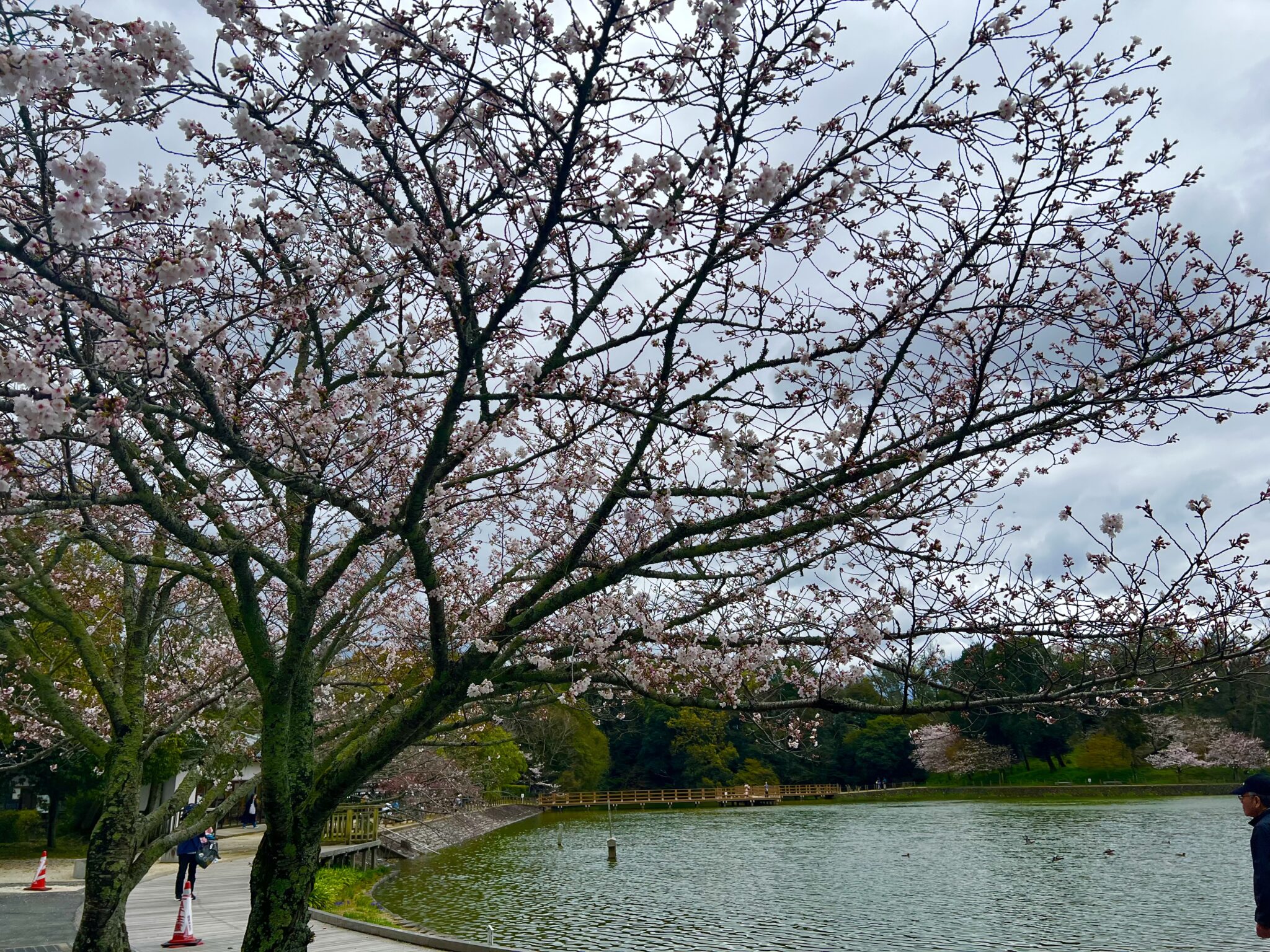
Access:Kashiharajingu-mae Station
This station is remarkably grand, mainly because it is where the Imperial Train stops. The main entrance of the station leads directly and straight onto the approach to Kashihara Shrine. Recently, many people may recall Princess Aiko’s visit to Emperor Jimmu’s Mausoleum, which left a lasting impression.
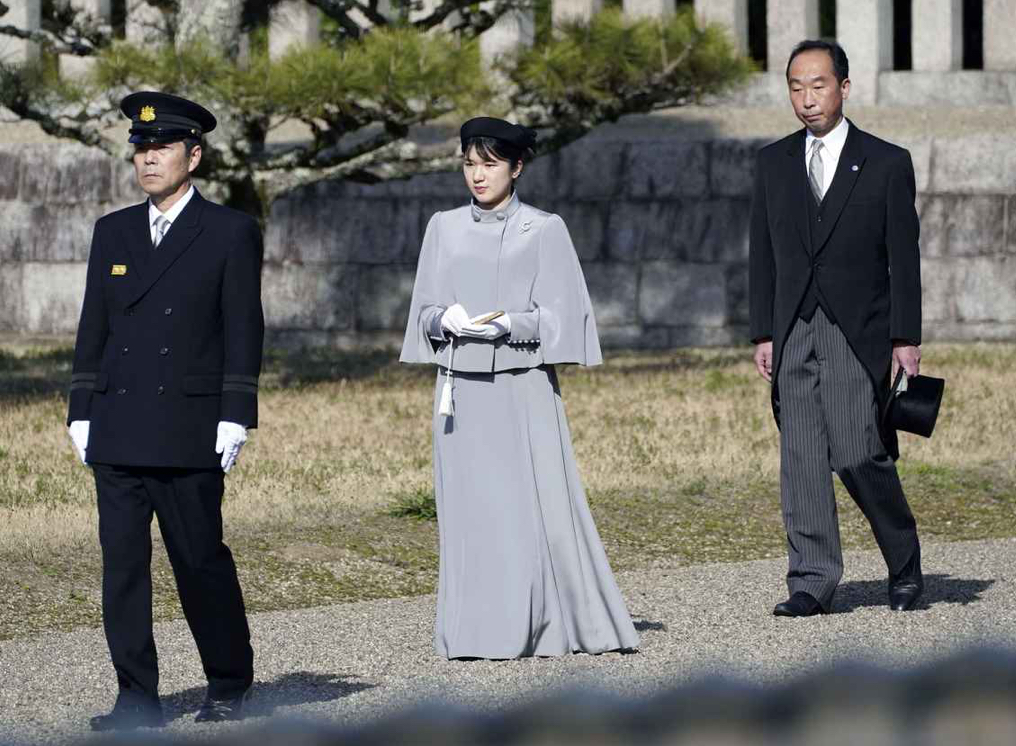
Get off at Kintetsu Kashihara Line’s “Kashiharajingu-mae Station,” which is right nearby. If you take the Kintetsu Limited Express, it’s a direct trip from Kyoto, taking 54 minutes.

